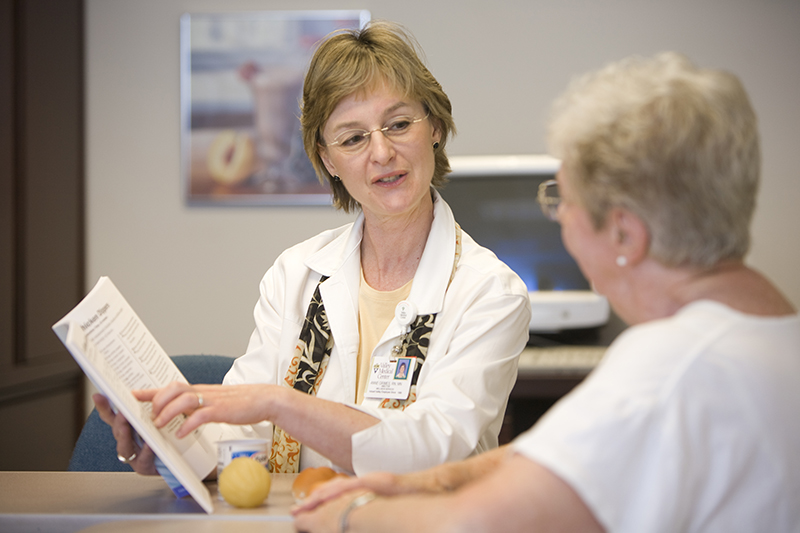
By VMC’s Diabetes Education & Nutrition Clinic
• Are you overweight?
• Do you exercise less than 3 times per week?
• Did you have gestational diabetes (diabetes when pregnant)?
• Did you have a baby with a birth weight of more than 9 lbs?
• Are you over 45 years of age?
• Do you have high blood pressure and/or high cholesterol?
• Are you African American, Hispanic or Latino American, American Indian, Asian American or Pacific Islander?
• Do you have a parent, brother or sister with diabetes?
If you answered yes to any of these questions you have a greater chance of developing type 2 diabetes. And you are not alone. Nearly 80 million Americans over the age of 20 are at risk.
In adults, type 2 diabetes accounts for 90-95% of all diagnosed cases. Type 2 diabetes begins when the body loses its ability to use insulin properly (insulin resistence) and over time, gradually loses its ability to produce insulin to maintain healthy levels of glucose in the blood.
Some people who have type 2 diabetes exhibit no symptoms, or the symptoms may be mild and almost unnoticeable, or easy to confuse with signs of aging. Half of all Americans who have diabetes do not know it. The symptoms of type 2 diabetes may resemble other conditions or medical problems so always consult your doctor for a diagnosis.
The most common symptoms of type 2 diabetes may include:
• Frequent bladder and skin infections that don’t heal easily
• High levels of glucose in the blood when tested
• High levels of glucose in the urine when tested
• Unusual thirst
• Frequent urination
• Weight loss despite an increase in appetite
• Blurred vision
• Nausea and vomiting
• Extreme weakness and fatigue
• Irritability and mood changes
• Dry, itchy skin
• Tingling or loss of feeling in the hands or feet
Type 2 diabetes is commonly preceded by pre-diabetes. In pre-diabetes, blood glucose levels are higher than normal but not high enough to be classified as diabetes. Many people with pre-diabetes develop type 2 diabetes within 10 years, states the National Institute of Diabetes and Digestive and Kidney Diseases. Pre-diabetes also increases the risk of heart disease and stroke. However, people with pre-diabetes can make life-style changes that can prevent or delay diabetes.
How can you prevent or delay the onset of type 2 diabetes?
• Lose 10% of your current body weight to decrease insulin resistance.
• Spend 30 minutes doing moderate physical activity 5 days per week and an additional 90 minutes per week of more vigorous activity to improve insulin sensitivity.
• Eat balanced meals that include more non-starchy vegetables and less refined sugar.
• Eat foods that help with blood sugar regulation, such as whole grains and beans, and other foods high in fiber.
The American Association of Diabetes Educators (AADE) offers guidelines to ensure that those with diabetes receive the most up-to-date information available. Valley Medical Center’s Diabetes Education & Nutrition Clinic, an AADE-recognized program, offers a team of highly trained nurses and registered dietitians. These specialists lead a variety of classes and individual consultations. They can help, whether you are at risk, have just been diagnosed with diabetes or have been living with the disease for many years. For more information about our program visit www.valleymed.org/diabetes.


